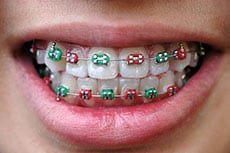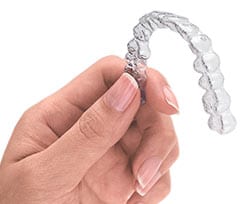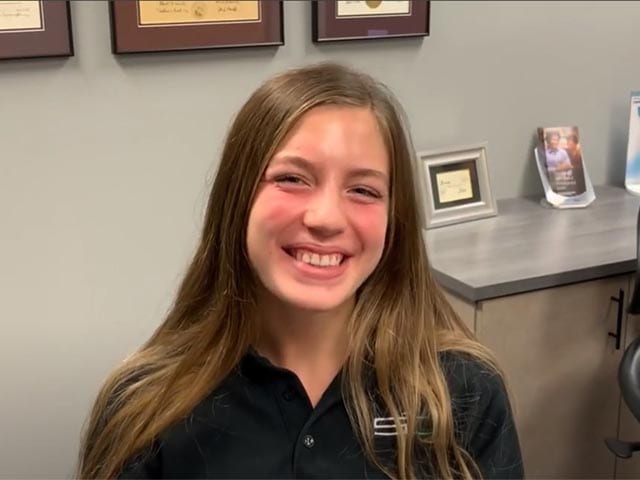If you search the web for “clear braces,” you’ll probably get mixed results, and some conflicting information on what clear braces actually are. Let’s delve into this, to clear up any confusion and help determine which treatment may be best for you.
When someone talks about clear braces, they will be referring to one of two orthodontic treatment options: traditional braces that utilize clear (versus metal) brackets, or Invisalign® clear aligners. Technically, Invisalign® is not braces, but this treatment does get lumped into the same category, since it can correct all the same orthodontic problems as braces.
Traditional Braces Utilizing Clear Brackets
Clear brackets are exactly as they sound. They are made of a clear, ceramic material, and only clear elastics are used to provide friction. While the archwire is still metal, the whole system is far less noticeable than its all-metal counterpart. Since the ceramic material is more brittle and susceptible to damage than metal, Dr. Weber prefers to use ceramic only on the top front teeth, and to utilize metal brackets on the top back and all bottom teeth.
Invisalign® Clear Aligners
As mentioned previously, Invisalign® is not technically braces. This treatment method consists of a series of clear trays (they look similar to teeth whitening trays), which are worn 22 hours a day. The trays are custom designed to shift teeth into place. Each tray will slowly move your teeth along a prescribed path throughout its lifecycle, and they are typically changed every two weeks.
Which Is the Right Choice for Me?
Every patient is different, and treatment recommendations are always customized to an individual’s situation at Weber Orthodontics. However, nearly all patients we see are eligible for both Invisalign® and all types of braces, to include clear brackets. Which treatment path you choose is ultimately up to you, but some things to keep in mind when weighing your options are:
- While clear brackets are less noticeable than metal ones, Invisalign® is virtually invisible
- Invisalign® is removable for eating, drinking, brushing and flossing; all braces are permanently attached to teeth
- Invisalign® requires a higher level of responsibility than braces: aligners can get lost or damaged, and their ability to be removed means you must actively commit and stick to wearing them the required 22 hours a day
- All braces require adjustments and elastic changes about every 4 weeks; with Invisalign® you will get several trays at once, requiring you to visit our office less frequently
- With braces, especially the more brittle clear aligners, brackets and wires can come loose and require an extra office visit; this will never occur with Invisalign®
- Invisalign® and braces have similar treatment times and cost, and both may be covered by orthodontic insurance
- Invisalign®, when designed by an orthodontist, can treat all the same orthodontic concerns as braces — a lot of people come to our office having been told they are not candidates for Invisalign®, yet Dr. Weber has successfully treated many of these patients with clear aligners
Whichever option you choose for your treatment, Dr. Weber offers in-house, zero-interest financing and flexible payment options. And new patient consultations are always complimentary, meaning there is virtually nothing but a phone call and a little time standing between you and the smile you’ve always wanted. You’ve got nothing to lose!
Now accepting new patients.










